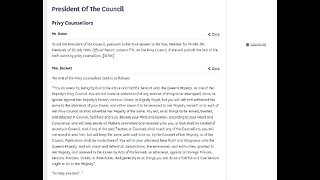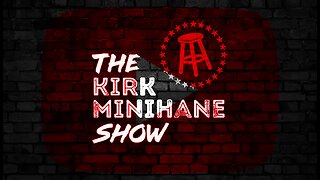The Great Storm hits England, 8000 dead and many more injured.
1703 : One thing the "Climate change" brigade forget is the historical references in England going back to 500 ad. Detailed accounts of bad winters where the north sea froze up to 7 miles from shore, the hurricane that hit us in 1703 that killed more than 8000 people and injured many more, the droughts that lasted from March to September.
Before cars, before the industrial revolution. So now you can see that climate change hoax is just that. Weather is weather.
https://premium.weatherweb.net/weather-in-history-1600-to-1649-ad/
https://wessexcoastgeology.soton.ac.uk/chestorm.htm#headpage
Daniel Defoe, The Storm. The book is obtainable in paperback, edited and with notes by Richard Hamblyn, Penguin Books, 228pp. 2003 and 2005; it can be bought from Amazon. Some notes based on this, follow:
Rise in sea-level during the storm. Sea rising in some place 6 or 8 feet higher (about 2.5 metres). This is similar to the effects of the 1824 storm with a sea level rise of 2 to 3 metres above the previous known high. At the present time storm surges can rise from 1 to more than 5 metres above high tide, but more than 3 metres is not expected in the English Channel, because there is no record of higher figures. (higher surges are not impossible of course, even if very unlikely)/
[The November 1703 storm had a major effect on the mouth of the Beaulieu River and thus Lepe Beach.]
[New Forest Damage: 4,000 trees were uprooted in the New Forest on the 26th to 27th November 1703. . p. 127. Six chimney stacks were blown completely clear of New Park House (north of Brockenhurst) without damaging the roof or the inhabitants and they landed several yards from the house. This provides evidence of sudden very severe wind force.
In November 1703 there was a famous storm that destroyed most of the windmills in England. It is considered to have changed the mouth of the Beaulieu Estuary in the relatively sheltered waters of the Solent by forming a new spit. According to Legg (1999) this had been recorded in parish registers as: "The great storm, both at sea and land, the greatest man knew in England was on the 26th day of November in the year 1703". See also Defoe (1705). This storm which continued over several days is bound to affected the Chesil Beach.
In this storm the Eddystone light was destroyed and all its occupants drowned, and within the first six hours of the storm the Royal Navy had lost twelve ships and over 1700 men. In all some 8,000 people were killed and thousands more injured. The author Daniel Defoe was in London at the time, and he used his own experiences of "this terrible Providence" as material for what became his first full-length book, The Storm, which he published the following year.
See Richard Hamblyn - Britain: The Gathering Storms. "Forget the violent gales of 1987 - when a real hurricane hit Britain 300 years ago, it was an 'Army of Terror' that killed 8,000 people. And we're due for another." He suggested in a review that this great storm was a hurricane that was thermally boosted in its passage from North America to Britain. Here is an extract:
"Three hundred years ago today - just before midnight on 26 November 1703 - a fast-moving Atlantic hurricane hammered into Britain from the west. It arrived entirely without warning, but it was to make its presence felt over the next six hours as it battered its way eastwards through the night. By dawn the following morning it had moved on to Scandinavia, but it left behind a 300-mile wide trail of devastation across England and Wales, all the way from Cornwall to the Wash. Some 8,000 people were killed, thousands more injured, and Britain looked and felt as if it had been transformed overnight into a war-torn country with a battlefield in every village and town. The author and journalist Daniel Defoe was in London at the time, and he used his own experiences of "this terrible Providence" as material for what became his first full-length book, The Storm, which he published the following year.
Defoe's account offers an unparalleled insight into what is still the worst storm in British history, and the only true hurricane ever to have arrived on our shores at maximum strength. We have had plenty of severe storms since 1703, most notably on the night of 15-16 October 1987, but we have never played host to another hurricane [but I am afraid that we have! See below the details of the 1824 Hurricane and Storm Surge.]
The meteorological definition of a hurricane is a tropical storm with sustained wind speeds of at least 74mph, originating in the western Atlantic. Given the rapidity with which our weather patterns are changing, however, and the increased number of damaging storms which we have suffered in recent years, how long will it be before Britain feels the force of another visiting cyclone like Defoe's? We are not just talking of a belter of a storm depression veering up from the Bay of Biscay, as happened in October 1987, but a full-blown hurricane flailing in from the tropics "like an Army of Terror in its furious March", as Defoe so memorably described it.
The question is difficult to answer with any degree of certainty, but since we know that the oceans are getting warmer every year, that a storm of such severity over Britain is viewed as a once-in-every-300-years event, and that the hurricane season for 2004 has been predicted to be unusually active by the US government's Hurricane Research Division, it appears that the question may well answer itself sooner rather than later..." continues.
-
 1:44:49
1:44:49
The Full English Show
10 days agoThe oaths that bind society continued . . . Privy Council . . . What if
2.83K49 -
 1:04:07
1:04:07
Trumpet Daily
1 day ago $1.81 earnedHot Take for the Regime: Michael Cohen Has No Credibility - Trumpet Daily | May 17, 2024
13.1K21 -
 57:09
57:09
CutJibNewsletter
22 hours agoYou've Got a Fiend - Cut Jib Newsletter Speaks!
11.3K1 -
 LIVE
LIVE
Kaloopy - The Eye Candy Channel
8 hours agoKaloopy - Eye Candy - Episode 1
540 watching -
 3:09:47
3:09:47
Turtleboy Daily News
14 hours agoEp663 - Karen Read Trial: Matt and Jen McCabe, Colin Albert Testimony
45.6K65 -
 4:47:16
4:47:16
SonnyFaz
9 hours agoSonny Debates OF Chug Jug Girl LVL 97
37.9K52 -
 1:06:35
1:06:35
The Kirk Minihane Show
12 hours ago420 Show
36.7K4 -
 31:28
31:28
Alexis Wilkins
21 hours agoBetween the Headlines with Alexis Wilkins: Wisconsin Supreme Court, Psaki's Book, Debates, Border
41.1K30 -
 LIVE
LIVE
Right Side Broadcasting Network
12 days agoLIVE REPLAY: President Trump Headlines the 153rd Annual NRA Meeting - 5/18/24
2,977 watching -
 35:50
35:50
TheTapeLibrary
1 day ago $0.02 earnedThe Disturbing True Story of The Amityville Horror
32.3K16